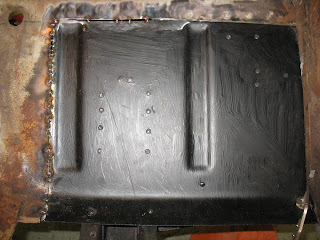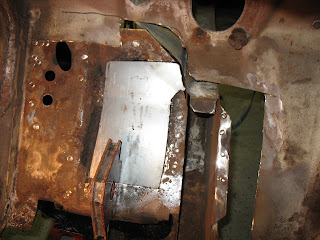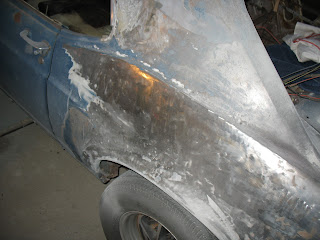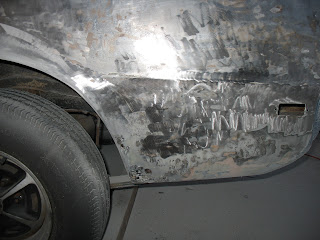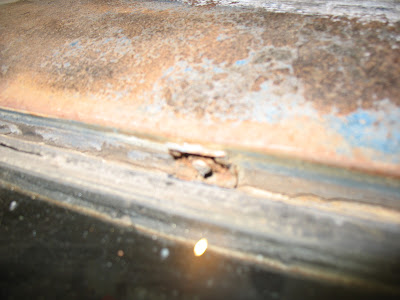So I'll try to break this up by timeline... because yes... for a time there my progress in the tear-down did slow quite a bit. Here's February.
FEBRUARY
I spent quite a bit of time sandblasting in the homemade bin and made some progress on the roof. Unfortunately, the siphon feed setup I was using was clogging quite a bit and it wasn't making as quick work of things as I had hoped.
Knowing that I'd need to get the car into the driveway for some more significant stripping I decided to put that on hold.
The next thing I tried was additional testing of that Eastwood Acid etch seen in an earlier post. Here's how the roof looked in process and the hood after some light work with the etch and some ceran wrap (I thought it might help keep the goop from drying out).
My opinion... but I think its quite a bit cleaner... there's still some deeper rust pits, but I can see them now... and hopefully a higher temp will help the goop act a bit more forcefully come spring time.
MARCH
Things started to pick up a bit in March. Why? Because the PFG bonus decided to hit and I was able to use some of it to further 'invest' in the car. First on my list - STEEL.
As you can see here we've got some heavy duty stuff. I'm guessing in the 500+ pound range. Not a bad shot of the car in the background. Neat so see how it looked then to now when I'm finally posting this.
The steel will eventually be destined for a home built rotisserie. Yep -I intend to flip the car like a chicken in a wal-mart roaster. Now that I've got the steel, its time for some more disassembly. But first, a shot of my cheesy smilin' little helper.
On to more disassembly. For some reason I misplaced or delted the pictures of just the fenders off the car. No big whoop there, but the hood followed the fenders along with the radiator, pullies, and all the other accessories in front.
In progress:
Here's the aftermath:
I hate to admit it... but these things sat on the floor for several weeks.
On to the engine.
And its out. Oh - one thing worth mentioning... I tried one last time before yanking this and everything else to get the car into a movable gear. It ran, but it would have been great if I could have limped it out into the driveway for stripping and working.
Still ran, but no forward or reverse gears- so it was time to come out.
I wonder if old Jake and Son in Conrad is still open for business.
Here's the engine on the stand (borrowed from Shane)
The void that was left after removing everything.

